Physical Address
304 North Cardinal St.
Dorchester Center, MA 02124
Physical Address
304 North Cardinal St.
Dorchester Center, MA 02124
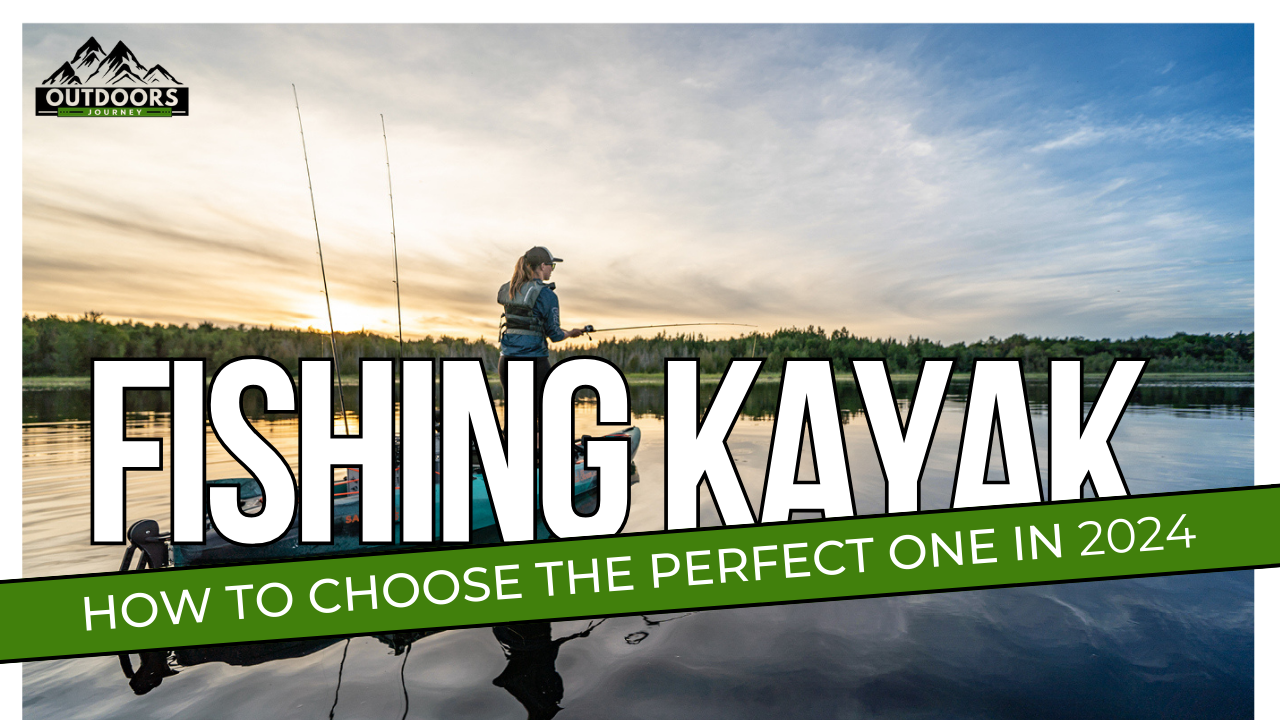
Choosing the correct fishing kayak can be about as hard of a decision – or quite similar- as how you should name your baby in this post! Regardless if you are an expert fisherman or new to kayak fishing, you must make the best choice. Yes, that is quite a bit from stability to storage and more. But no worries, I can show you how. Well, today we break down all of that and help you decide what fits your fishing better. And on a great paddling day, the perfect kayak.
If you’re beginning your search for the right fishing kayak, this will be pretty vital to understand about different kinds of these sorts on offer. They each come with their own pros and cons, depending on the fishing style, area, etc.
When it comes to fishing, sit-on-top kayaks are easily the most popular. Their open deck is helpful for movement and easy reach to the stuff. Also, they tend to be more stable so it is great for those that fish out in the glassy stuff. Sit-inside kayaks, on the other hand, offer greater weather protection and tend to be lighter but can feel less nimble when you want to move around or reach into your gear.

A pedal kayak might well be your best solution if you need both hands on hand while fishing. The feet-driven kayaks where you propel yourself with your feet (a big plus when you need to keep one hand on the rod and one paddling) are pretty awesome. However, pedal kayaks are typically pricier but the hands-free fishing feature has also made them popular with hardcore anglers.
Inflatable kayaks have come a very long way, and today they are certainly worth considering as an option for fishing vessels. They are very easy to move, and they stack—which makes them ideal for those with little floor space. Yet hard-shell kayaks are generally more secure, giving the strength you should understand up for a large catch.

The Prowler 13 measures in at eleven feet and four inches, is light enough to carry using one hand up from the lake or across your shoulder like a musketeer — as well fastened for rod holders should you prefer doubling down with paddle-op buddy-fishin ‘using. They are dual-rider options and two of you may enjoy time together while fishing. Of course, tandem kayaks are usually longer and heavier than a single kayak so keep that in mind when considering transportation and handling.
Deciding on a kayak for fishing is not just picking through the ones that look like they would go fastest or be easiest to dump your pocket into. Now, a few such important considerations should be kept while buying a kayak.

Stability is paramount and never more so than when battling a BFG (big fish or giant….violent fishing spot). Non-flip stability optimizes stability for fishing, making you feel safe. When you’re on a kayak for fishing, make sure that it is wide and has a flat hull design as those are the stablest kayak people can find. Wider & flatter kayaks tend to offer high stability for fishing(stable platform) – this seems like common sense but remember boats tip over occasionally which makes balance an important factor, even more so when one considers half of all boating accidents occur due to capsizing or falls-overboard (for humans).
If you intend to spend hours at a time, comfortable seating is vital. Sometimes simply paddling with shoes on is more comfortable than barefoot, a kayak seat that you can actually adjust to your back or some legroom for storage (seat storage) may make ALL the difference in enjoyment. That means the ergonomic seating you get in premium kayaks extends your day without getting fatigued while you hang for fish. Don’t forget about legroom and footrests either–these are big factors in your comfort as well while having plenty of storage space.

If fishing is your game, you need a kayak that can easily carry entire worlds of gear — rods and tackle boxes on one side; dry storage for clothes, more tackle, or whatever else; coolers to keep snacks (and in some cases drinks..?) ice cold all day long with minimum horizontal displacement drilled into the hull itself; hell even those big fish catches pile up as triumvirate scales tipped decisively favoring YOUR.. perspiration-inducing swinging pendulum victory… Oh no! Ample storage facilities for your stuff in a kayak, such as hatches bungee cords, and deck space or seat-storage spaces to organize where you placed all the fishing gear will help streamline things.
But you need to select a kayak that is capable of supporting your own weight as well as the load. When deciding how to transport a cooler on your kayak, be mindful of the weight capacity limit since overloading can affect its performance and safety.
The theory is nice (a bigger, more secure kayak) but remember how you will get it there. For further-flung river runs and isolation, lightness for getting your kayak to the water is also useful. For inflatable kayaks this is easy, but if you want a hard-shell model make sure it does not have more than 40lbs (or about 20-30kg) of weight.
Safety is always paramount out on the water, and it can be even more so when fishing from a kayak(fishing platform). Select a well-built kayak that can manage the different types and severity of water, one with stability and longevity. You need a flat deck platform, on which you can walk to cast and yank the fish back. Ensure that your kayak is fitted with anti-slip deck pads to avoid any accidental slippage, the added grip will give you a hold even when wet. Oh, and let’s not forget the high-impact handles; perfect for assistance in carrying your kayak to and from water. Having these options available to you will put you in good stead for a safe and pleasant fishing expedition on the water. Stay safe and choose a confidence-inspiring fishing machine!
The gradual onset of long, winding vehicle queues meant one thing to us: we were on the way to High Rock Lake and a day of stringing together catch lines. Bear in mind the following features to help improve your fishing experience.

Multiple rod holders are a game-changer. You can run multiple lines or paddle confidently hands-free while managing other gear. Many kayaks have rod holders that are built right in, while others you will need to add on after-market.

You never know when you might need to stay put in the one fishing spot— hopefully, because you’ve found a great fishing hole! Even in currents or winds, a good anchor system is meant to keep you still and hold your position so that all you must worry about is the fishing part.

If you are into fishing then it’s almost a necessity for you as well. A big part of kayak fishing comes from the electronics that we install like the fish finder so check and see if they’re able to integrate with your craft. Ensure that the kayak has mounts or compartments to conveniently fasten and safeguard your electronic equipment.

You will need efficient storage to minimize the clutter of your kayak. Choose Look For Large Hatches And Clear Deck Space so that You Can Easily Get Your Gear In and Out. Also, there are fishing kayaks that come with lockable storage, dry storage, and compartments specifically for tackle and bait.

There is nothing to beat the customization of fishing kayaks. Up from more rod holders for hands-free fishing to improved anchor systems and storage solutions, trolling motor mounting points, innumerable ways to customize your kayak can make it a whole lot better than how you found it.
The type of material will affect your fishing kayak logistics and how it impacts durability, weight, and performance. Here’s what you need to know:

Source: https://kayakdave.com
Fishing Kayaks are typically constructed of Roto-molded Polymer, which is a sturdy and also influence-resistant kind of plastic. Fiberglass (Thermal Form Plastic) and composite often are lighter than plastic kayaks for enhanced speed and maneuverability on the water but at additional cost. But as far as impact and entry-level paddling kayaks are concerned, they may not be immune to rocks or any rough environment.

Best Walking Shoes Often Have A Trade-Off Between Lightweight and Durability. Kayaks that are heavier and stronger can take more abuse over time but they tend to be harder to transport, carry around with you and maneuver. On the other hand, lighter kayaks are more convenient to carry and paddle but may be weaker against damage. Think about where you intend to use the kayak and for how often while selecting one.
Regular maintenance is the key to keeping your kayak running in top form. After every use, rinse your kayak with fresh water to rid it of any possible salt. Salt can cause eventual corrosion. Keep your kayak in the shade to avoid UV damage, and inspect it once a month for signs of wear or potential problems. By taking a few simple steps, you can help ensure that your kayak will bring you enjoyment for years to come.
Selecting the right brand can have an impact on your fishing experience. Some of the best fishing kayak brands in 2024 [Quick look]

This Kayak Mensza which is still under review, just like other repetitions of those from Hobie, Old Town, and Perception to mention the most advantageous will for sure make its mark on this market. Brands that we provide and their models for different types of anglers Be it fishing enthusiasts or pro anglers, each requires a unique set of requirements to satiate its curiosity.
Hobie is already well known for its pedal-powered kayaks, and this trend carries on with the MirageDrive Angler System – providing anglers with a hands-free fishing platform that most serious fisherman are looking for when heading out into their favorite waters.
Old Town kayaks blend classic boat-oriented craftsmanship with modern capabilities to produce the fisherman-friendly angling platform.
Perception manufactures high-value, durable trolling motors dedicated to providing reliable performance at affordable prices.
The Hobie Mirage Outback, Old Town Predator, and the Perception Pescador Pro are among this year’s best models in 2024. They are popular because these kayaks have good stability and comfort with many already living up to their fishing-specific features. Both have their advantages and disadvantages, so think about what features are most important to you when deciding on a model.
With such varying options, fishing kayaks fall all over the board in pricing and you can get one to fit your budget without sacrificing any of the features you need.

At the low-cost end (up to $500), you get entry-level models ideally suited for beginners or anyone who has budget constraints. Higher-quality kayaks ($500-$1,000) include features like built-in rod holders and storage compartments for rods. Kayaks that cost more than $1,000 are usually made with the highest-quality materials and come equipped with high-tech features such as pedal drives; these boats are for true die-hards who require cutting-edge technology.
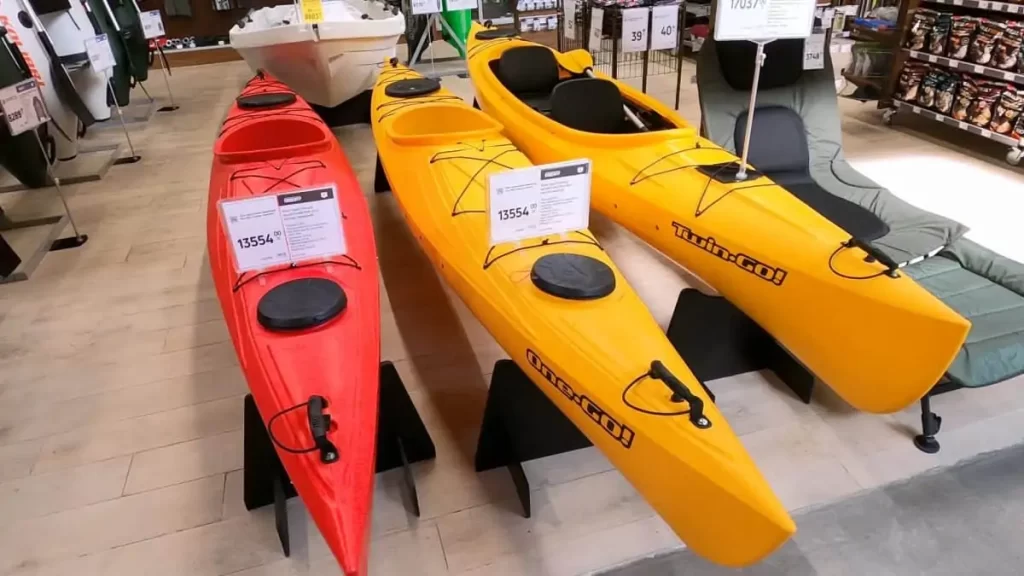
Price should not determine that a kayak is the better option. Instead, you want the best bang for your buck concerning what works best in a kayak. When you are choosing a kayak for fishing, it is not always necessary to spend thousands of dollars because some mid-range can also give everything in less price.
You can save some money by buying a second-hand kayak, but that comes with its own set of risks. Inspect the kayak for damage or wear, and think about what it will cost to fix up in terms of repair & upgrades That will come with a warranty and the peace of mind knowing it’s in perfect condition, but you’ll have to pay more upfront.
The most significant investment is, of course, a fishing kayak — and you also better sit in it first to be sure that every little thing meets your own size.
There is no way to replace the feeling you get paddling for yourself on a body of water. It will help you know the stability, comfort, and handling of this kayak before buying.
Take note of how comfy the seat is, just how robustly constructed the kayak feels, and exactly how simply it steers. Recreate real fishing situations, paddle at various speeds, and experiment with: Getting on/off the water.
Join a demo day: Many kayak shops and outdoor stores offer hands-on help on the water, with qualified staff hosting Days for you to Try. The staff expert offers the ability to compare individual models of cars, and every test drive represents such an opportunity. Contact Outrigger or your favorite retailers to see when the next demo days are happening in your area.
When kayak fishing, you should always prioritize your safety. Here are a few crucial factors to consider:
Your life jacket, you should also be wearing it; and that even if you know how to swim. Take a whistle or some other signaling device with you to attract attention. A first-aid kit, suncream & water are also essentials for a safe day on the water.
Be sure to watch the weather before you go out, even if it is not in that day’s forecast. Fishing in rough water or storms puts your life at risk. Tell someone where you are fishing and when to expect your return In the same vein, always pay attention to everything around you: boaters and obstructions in the water.
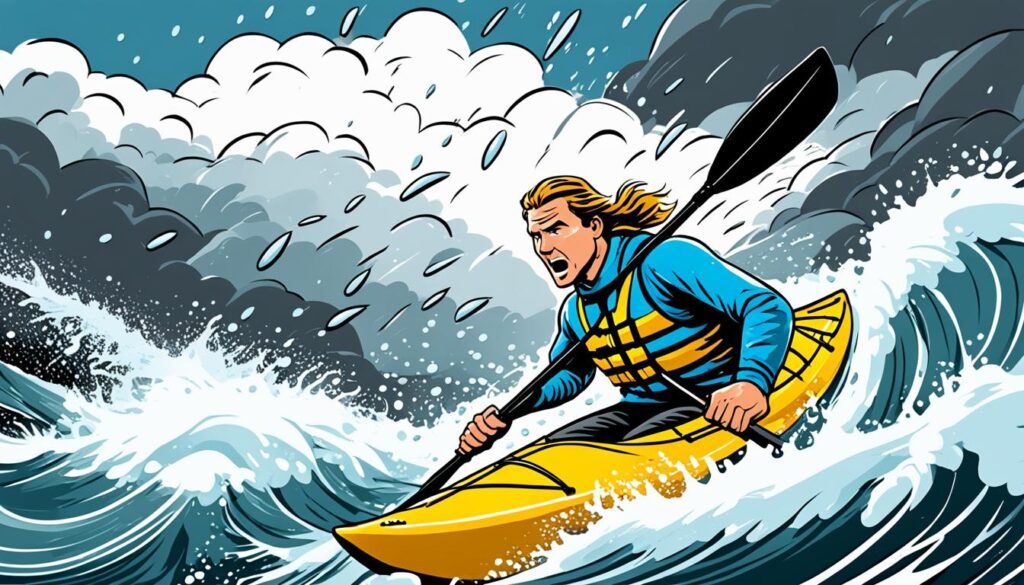
There are steps to take when fishing in different weather conditions. If it is hot take care of the Sun and you will get dehydrated. wear layers, and be mindful of possible hypothermia in cooler weather. It is better to cancel your visit if there are forecasts of rain only as this might cause you cancellation charges.
Lastly, it affects your experience and satisfaction if you make a decision about where to purchase the fishing kayak.
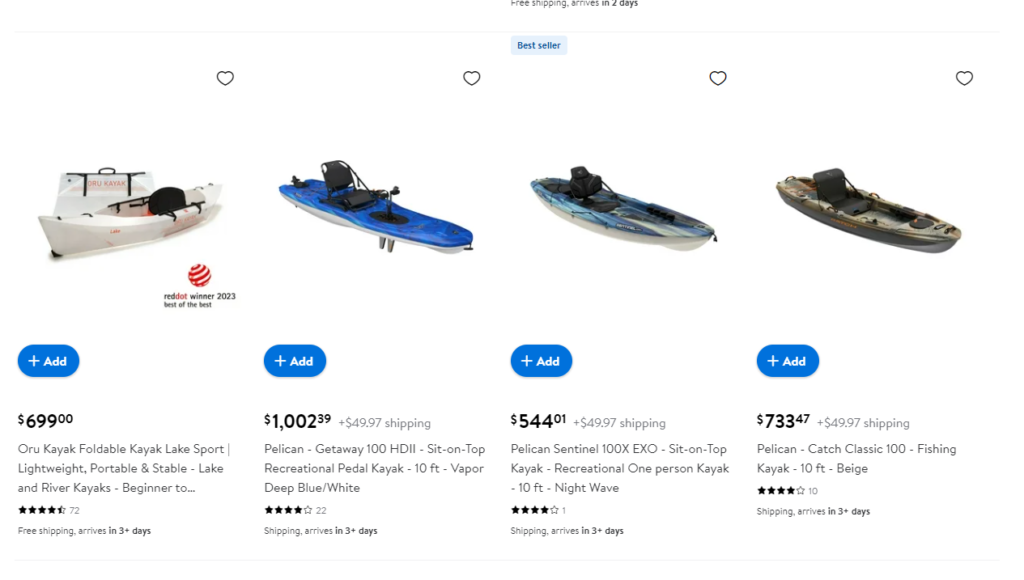
It is easier and the selection is usually better to buy your kayak online, though you sometimes miss out on feeling how well it fits by not being able to sit in one beforehand. Physical shopping enables you to visit and feel the kayak firsthand before making your decision, plus can often result in helpful suggestions from employees who know what they are talking about. However, there may be less selection and prices are sometimes higher than those online.
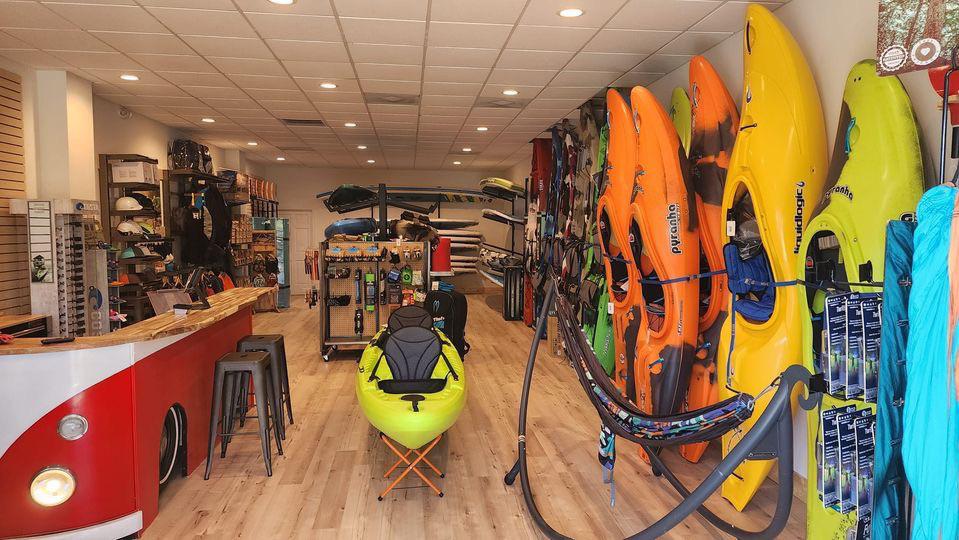
Make the effort to shop around and watch out for sales – particularly during off-season times of the year whether online or offline. Of course, there may still be some deals to be had with last year’s models or during seasonal sales from some retailers. Do not hesitate to negotiate also asking price match if you can get a better deal in another shop.
Purchase online purchase cards through reputable retailers or companies that have good refund policies. If you are using a private seller, especially if the kayak is of an older model ask all about it and seek detailed photos to make sure that you get what was outlined at purchase time.
The best fishing kayak need not be a daunting task. With the help of factors like stability, comfort, and storage in mind as well as trying things out for yourself you are well on your way to kayak ownership. Remember: The best fishing kayak is one that accommodates your style of hunting and hobby. Ready to make a splash? Now get out there and find your soulmate so you can start making lifetime fishing memories!
Get ready for your kayak fishing adventure! Download this essential checklist and make your first trip a success.